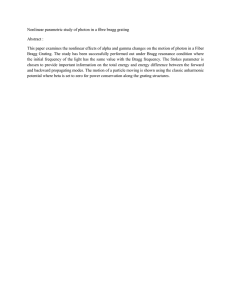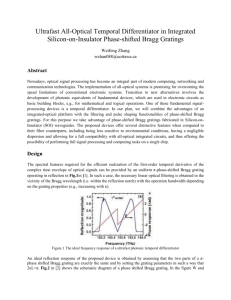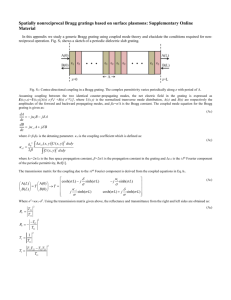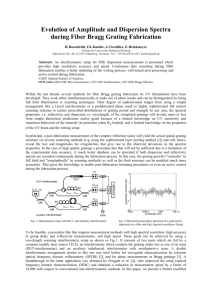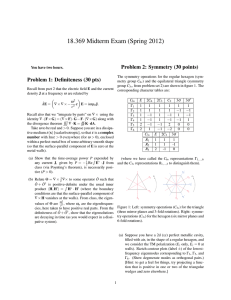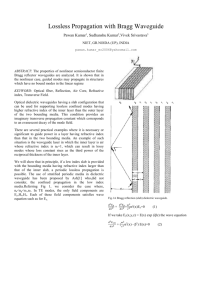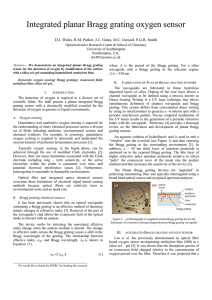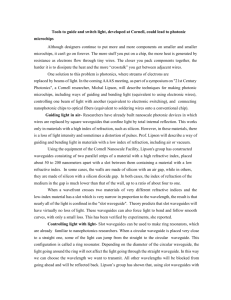Following table give the parameter for the waveguide, obtained from
advertisement
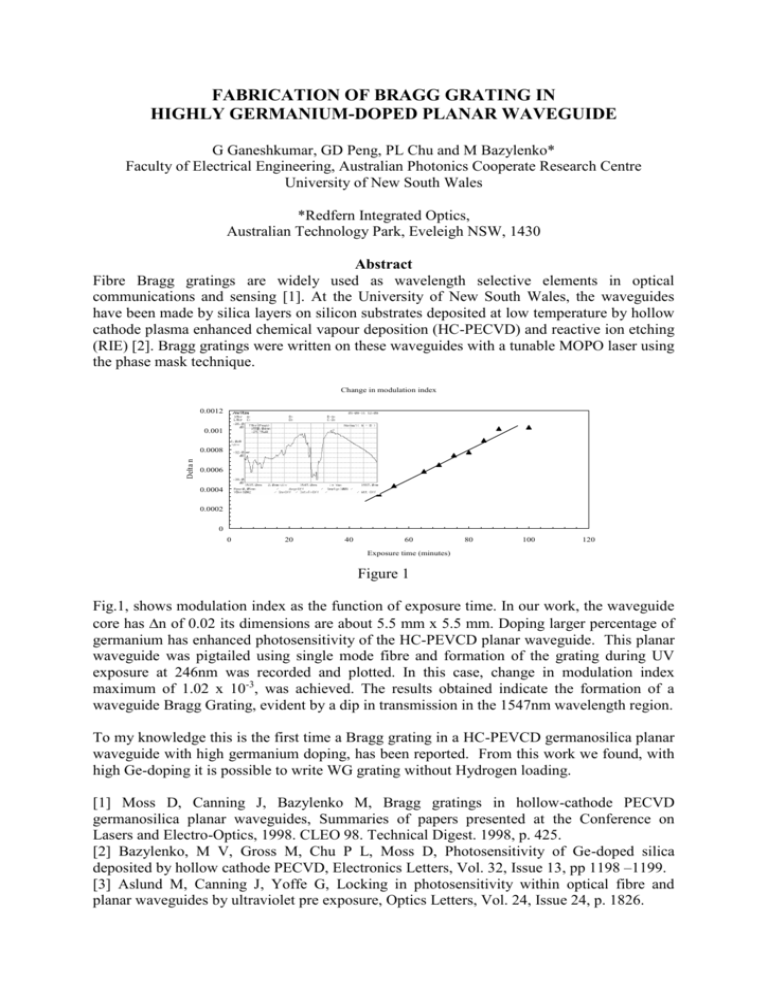
FABRICATION OF BRAGG GRATING IN HIGHLY GERMANIUM-DOPED PLANAR WAVEGUIDE G Ganeshkumar, GD Peng, PL Chu and M Bazylenko* Faculty of Electrical Engineering, Australian Photonics Cooperate Research Centre University of New South Wales *Redfern Integrated Optics, Australian Technology Park, Eveleigh NSW, 1430 Abstract Fibre Bragg gratings are widely used as wavelength selective elements in optical communications and sensing [1]. At the University of New South Wales, the waveguides have been made by silica layers on silicon substrates deposited at low temperature by hollow cathode plasma enhanced chemical vapour deposition (HC-PECVD) and reactive ion etching (RIE) [2]. Bragg gratings were written on these waveguides with a tunable MOPO laser using the phase mask technique. Change in modulation index 0.0012 0.001 Delta n 0.0008 0.0006 0.0004 0.0002 0 0 20 40 60 80 100 120 Exposure time (minutes) Figure 1 Fig.1, shows modulation index as the function of exposure time. In our work, the waveguide core has n of 0.02 its dimensions are about 5.5 mm x 5.5 mm. Doping larger percentage of germanium has enhanced photosensitivity of the HC-PEVCD planar waveguide. This planar waveguide was pigtailed using single mode fibre and formation of the grating during UV exposure at 246nm was recorded and plotted. In this case, change in modulation index maximum of 1.02 x 10-3, was achieved. The results obtained indicate the formation of a waveguide Bragg Grating, evident by a dip in transmission in the 1547nm wavelength region. To my knowledge this is the first time a Bragg grating in a HC-PEVCD germanosilica planar waveguide with high germanium doping, has been reported. From this work we found, with high Ge-doping it is possible to write WG grating without Hydrogen loading. [1] Moss D, Canning J, Bazylenko M, Bragg gratings in hollow-cathode PECVD germanosilica planar waveguides, Summaries of papers presented at the Conference on Lasers and Electro-Optics, 1998. CLEO 98. Technical Digest. 1998, p. 425. [2] Bazylenko, M V, Gross M, Chu P L, Moss D, Photosensitivity of Ge-doped silica deposited by hollow cathode PECVD, Electronics Letters, Vol. 32, Issue 13, pp 1198 –1199. [3] Aslund M, Canning J, Yoffe G, Locking in photosensitivity within optical fibre and planar waveguides by ultraviolet pre exposure, Optics Letters, Vol. 24, Issue 24, p. 1826.
